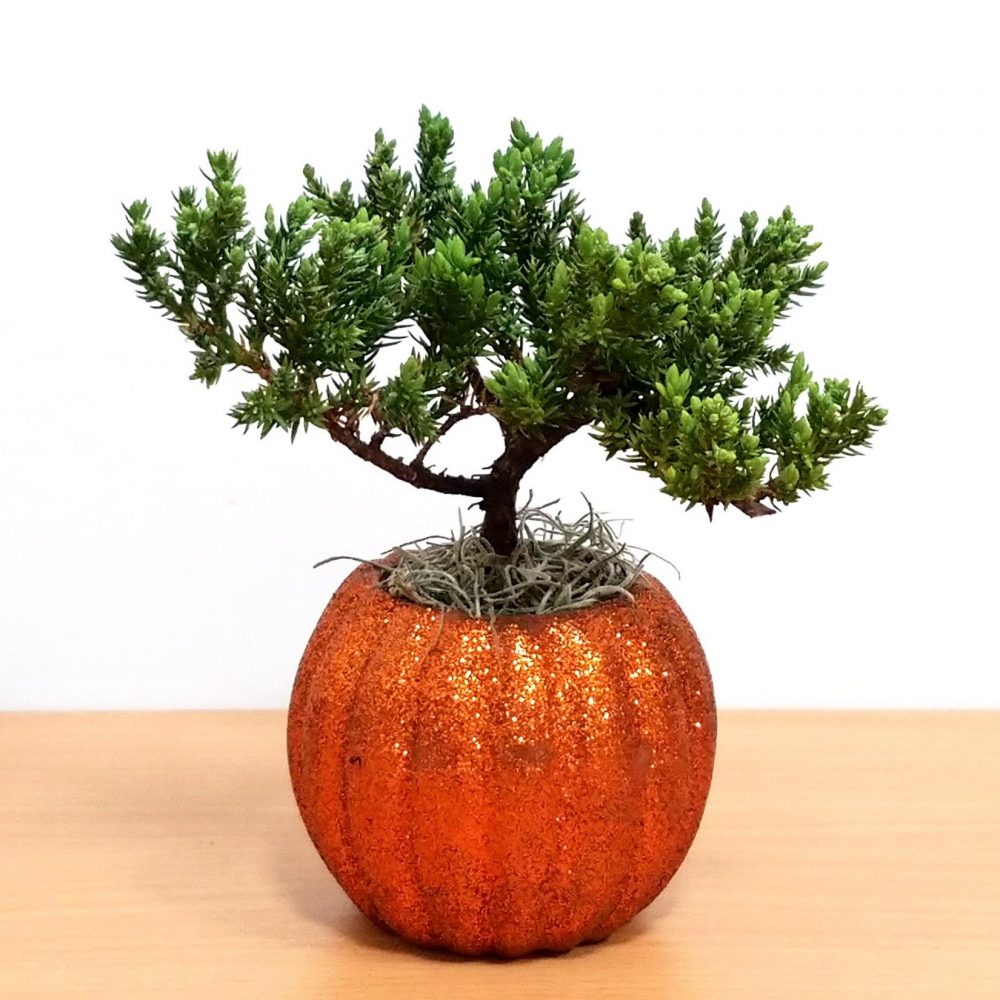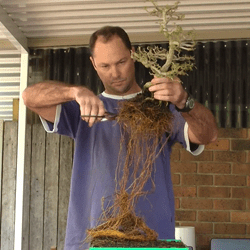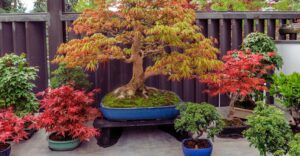
Outdoor: The cooler temperatures will help reduce the tree’s need for water, but we still need to monitor the soil moisture in each pot daily. All outdoor bonsai must remain outdoors at this time. Sometimes they are brought indoors on chilly nights because someone thinks they are protecting them from the chill. This is a wrong idea. The alternation of warm days and chilly nights is a part of what sets the tree into dormancy. The more times that this alternation takes place, the deeper the dormancy can become. A tree left out in the open, such as on a table, will not be damaged by cold until the temperature falls into the mid-twenties. Fertilization should continue, but the levels of phosphorus and potash should be increased. Nitrogen levels should be 10% or less. This change will help slow down new growth and harden the tissues before the cold weather arrives. Wires should be watched closely. At this time of year, trees are busily storing food for the coming winter. This causes an increase in the diameter of twigs, branches, and trunks. Wires that were loose enough a month ago may become too tight now and will need to be removed and, possibly, replaced. Do not repot at this time.
Indoor: The indoor bonsai will need to come back indoors. It is a good idea to check the trees for insects and treat any that are found while the trees are still outside. Always be sure that you are using an appropriate treatment for the problem. If you are not sure what you have, you may place a sample in a plastic bag and bring it to your local nursery or garden center or the Morton Arboretum and Chicago Botanic Garden plant clinics. Keep the trees watered but do not fertilize for the first couple of weeks after the move. This allows some time for the trees to adjust to their new situation. Some trees will drop leaves when moved to a new environment. This is not unusual, and the leaf drop should end after a short period. New leaves should soon replace those that have fallen.



